Learning Singlish, navigating hawker centers, and the deal with the chewing gum ban: intel for Southeast Asia’s city-state.

Singapore is a city and a country. A collection of islands (one larger, and lots of smaller ones) at the southern tip of the Malay Peninsula in Southeast Asia, local empires settled the islands from the 2nd century AD. Fast forward to 1819, when Sir Stamford Raffles founded Singapore as a trading post of the East India Company. Singapore was ceded to Britain after the East India Company collapsed, then became an independent city-state in 1965 when it separated from Malaysia, and since then has been busy molding itself into a sleek, modern, efficient, multicultural financial hub. But as a city-state there is no hinterland, which means that many of the people who come to the city to work are immigrants, and Singaporeans who want to leave the city have no choice but to emigrate.

Don’t be a potato; learn some Singlish. There are four official languages in Singapore: English, Mandarin, Malay and Tamil. English has been the predominant language of instruction in schools for most Singaporeans since the 1970s, so English-speaking visitors will do just fine in most circumstances. But there is Singlish. Singlish is a hybrid language developed from interactions between different ethnic groups in Singapore, with smatterings of other official languages and Chinese dialects, such as Hokkien. The result: gems like gostun, which means to back a car up, derived from the nautical English “go astern”. Or jialat, which is a local version of ‘oh no!’, derived from the Hokkien phrase “to sap energy”. There is not just one way to speak Singlish, though. Some words and phrases are widely understood, but each version of Singlish is influenced by factors such as ethnicity—Chinese Singaporean Singlish can have slight differences from that of Malay or Indian Singaporeans. Singlish is also marker of education and class. Well-educated Singaporeans are expected to code-switch seamlessly between Singlish in casual settings and English in formal situations, while Singaporeans who haven’t had the same level of English education might only speak Singlish. A Singaporean who never speaks Singlish is considered jiak kantang—literally translated as “eat potato” (as opposed to the Asian tradition of eating rice) meaning a Singaporean who behaves more “Western” (read: white) than Asian.
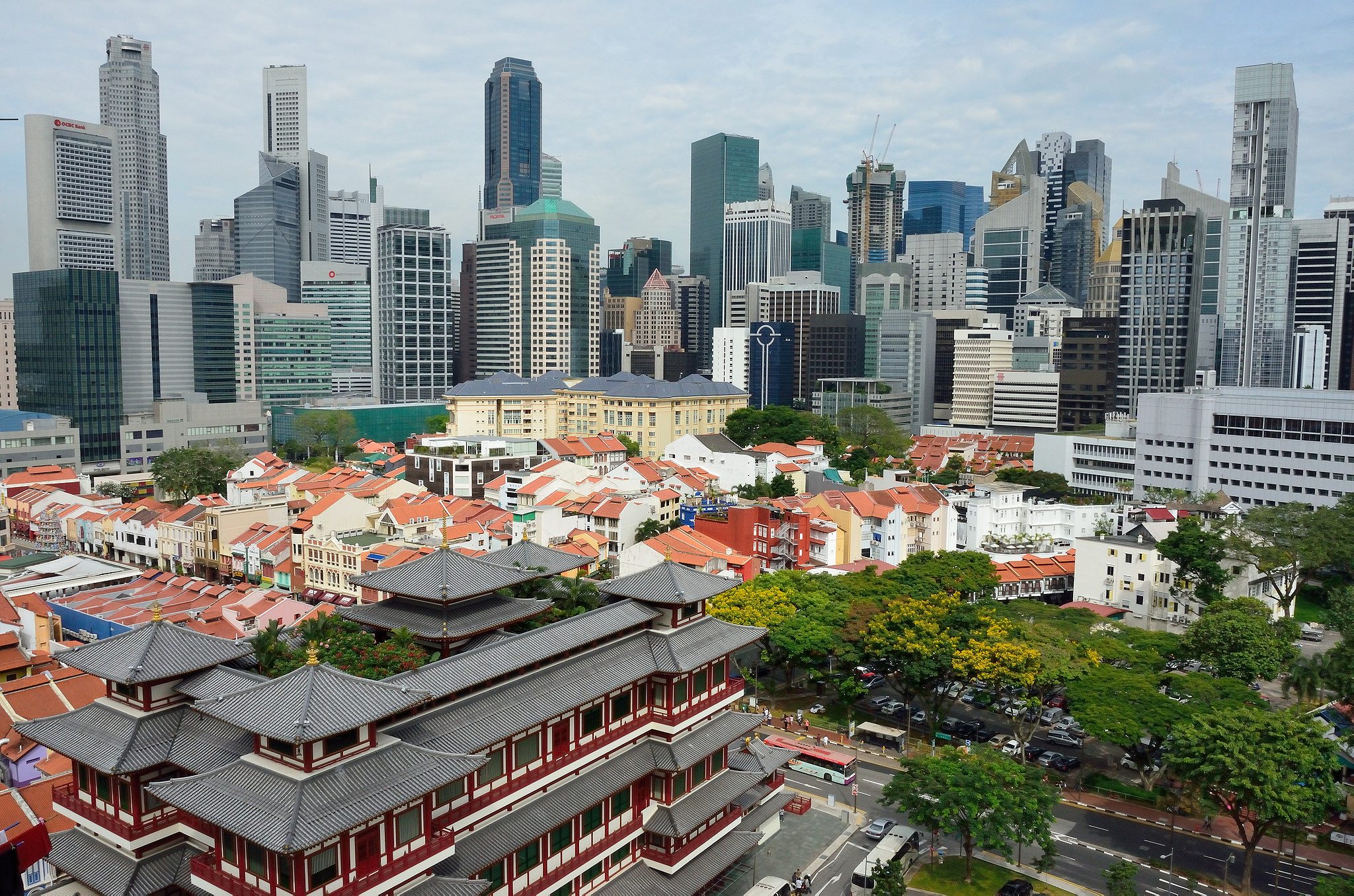

Don’t take ‘racial harmony’ at face value. From the state’s point of view, Singaporean society is organized into four racial groups: Chinese, Malay, Indian and ‘Others’. While the Malays are recognized as the indigenous community, the Chinese form the majority of the population (75%) due to the high levels of immigration from China after 1819. This Chinese-Malay-Indian-Others model, also known as CMIO, also has practical implications, such as where people can live: among other rules (such as age, household income and marital status), public housing also includes an ethnic quota that determines how many people of each race can live in a particular block of flats. Much is made of Singapore’s “racial harmony”, and the race riots of the 1960s are held up as a bogeyman to warn Singaporeans not to stoke unrest between ethnic and religious groups. But the fact is that Chinese Singaporeans enjoy a vast amount of privilege, from the special assistance some schools get to ensure students remain connected to Chinese culture, to the fact that “bilingual” in a job ad almost always means that the applicant should speak English and Mandarin. There are other racist practices in Singapore, too: for example, it is totally legal for a landlord or real estate agent to say in a property ad that Indian tenants need not apply.

The malls are taking over. Shopping is a big deal in Singapore. Singaporeans spend a ton of their free time in malls, window-shopping, having drinks in cafes, catching a movie with friends, or just seeking shelter from the tropical humidity. Sometimes you can’t avoid passing through a mall: some mini-malls were incorporated into train stations or underpasses, such as CityLink, which connects one train station to another. But unless you’re looking for some designer gear, you’re not likely to get much that you can’t find elsewhere.

Food is a national pastime. Along with shopping, food is a national pastime. Singaporean cuisine is a wonderful mongrel of Malay, Chinese, Indian, Indonesian and Western flavors: fusion was the norm here long before it fell in and out of fashion in the West. The same dish can also be interpreted and prepared a little differently: for example, Indian, Chinese and Baba-Nyonya (Straits Chinese: a mix of Malay and Chinese) food stalls all have their own versions of Singapore’s celebrity dishes: fish head curry, Singapore crab. The sumptuous laksa—a noodle and curry feast with a spicy coconut broth—can be found in both Chinese and Malay establishments. Laksa comes in many guises in Singapore, but the Katong laksa, made with thick vermicelli noodles cut into pieces and sprinkled with prawns and fishcake, is a favorite.
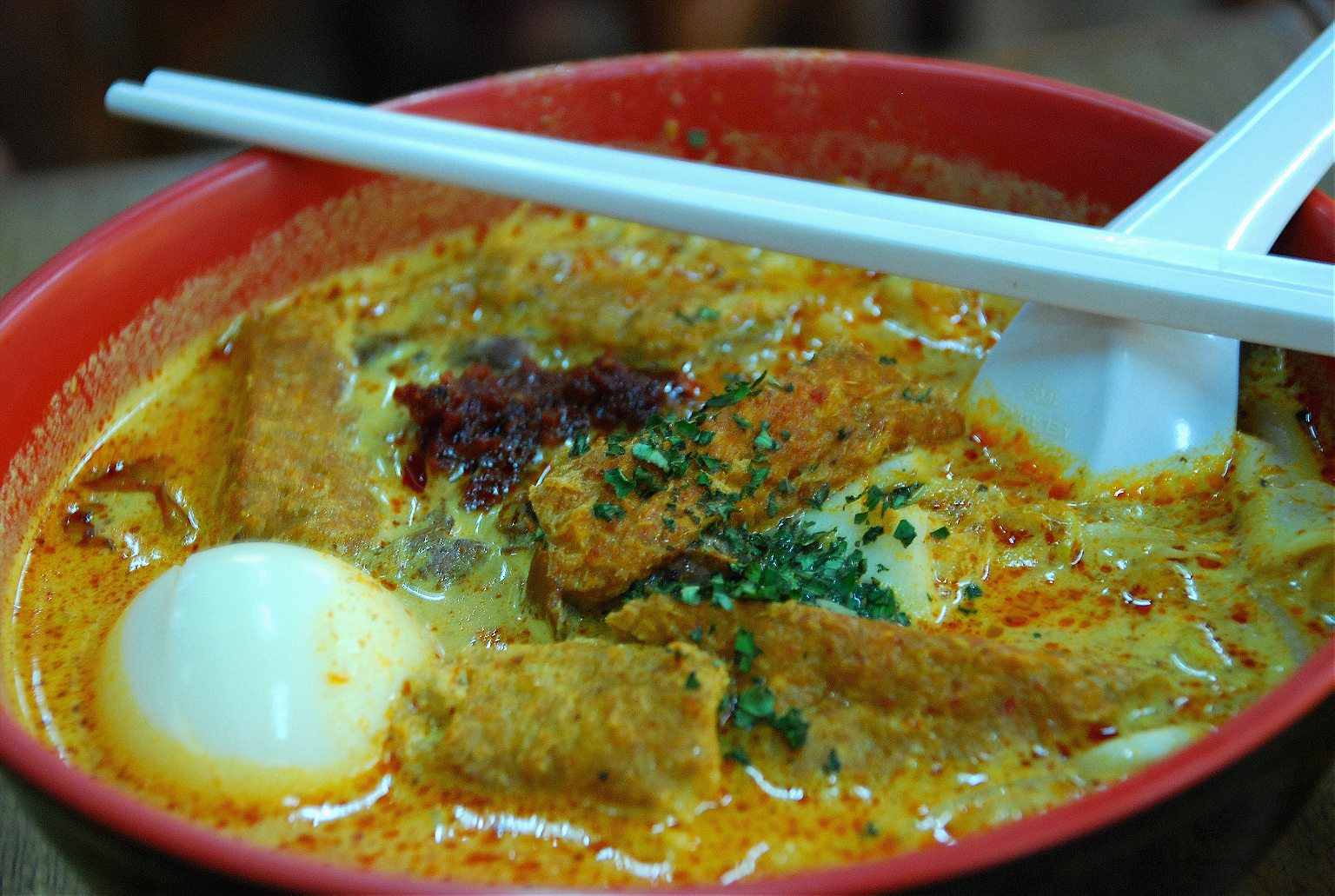

Head for the hawker centers. There are plenty of restaurants and cafes in Singapore that serve local cuisine, but you haven’t truly experienced Singaporean food until you’ve been to a hawker center, coffee shop, or at least an air-conditioned food court. Hawker centers are food markets with a range of stalls serving local—and increasingly international—fare. It’s self-service: grab a seat and are free to order anything and everything you want. For about S$3-S$6(US$2-4) you can get a pretty good meal, with a drink for an additional S$1.50 -$2.(US$1-2). Some culinary boxes to check are the carrot cake (no carrots or cake involved – its base is a local white radish), Hainanese chicken rice and satay.

Hit Lau Pa Sat in the evening. This hawker centre provides the perfect blend of tourist attraction and food haven. In the heart of the Central Business District, it’s been a marketplace for Singapore since 1894, and was declared a national monument in 1973. It houses a ton of hawker stalls offering everything from Singaporean to Costa Rican cuisine. Come evening, a small street adjacent to the structure is closed off and dozens of satay vendors emerge for a night of smoky, delicious indulgence.
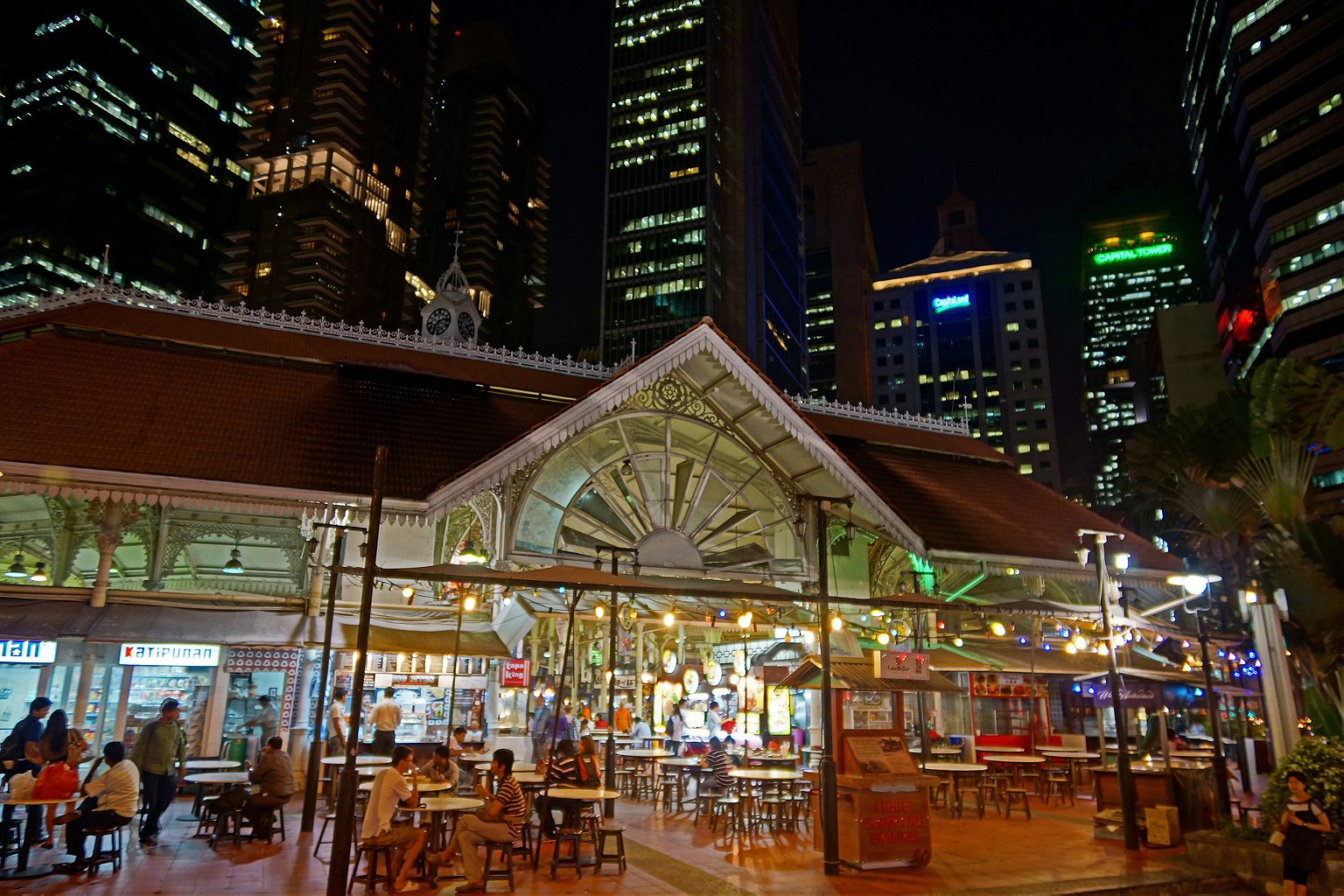

Don’t sweat the service. Don’t expect coddling customer service at hawker centers. The aunties and uncles who run the stalls may seem brusque, but they’ll get you what you need (or at the very least what you want). Just tell them your order and let them get on with it. Hawker centers and food courts are largely self-service places, so unless you’re told that they’ll bring the food to your table, you’re expected to collect your food yourself.

Singapore is kind of a democracy…The People’s Action Party (PAP) swept into power in 1959 and has stayed there. There have been three prime ministers, beginning with Lee Kuan Yew, who governed for over three decades. His son, Lee Hsien Loong, is the current prime minister. The PAP is still a popular party in the country. They won the last general election in September with almost 70 % of the vote, and Lee Kuan Yew’s death in March 2015 prompted some prolonged and tearful national mourning.
THE GOVERNMENT’S PRESENCE IS PERVASIVE, INCLUDING STATE-ENDORSED DATING EVENTS

…But it’s not that free. The government limits political opposition and citizen’s rights. The government has a say in the appointment of major shareholders as well as the editor-in-chief of domestic media, so papers tend to toe the line. The Elections Department falls under the purview of the Prime Minster, and electoral boundaries shift before every election in ways that spark suspicions of gerrymandering. Dissenting voices are kept in check through defamation lawsuits or contempt of court cases. Singapore is often described as an authoritarian state, but it’s far more complex than that. The government’s presence is pervasive – from government-linked companies in industry to state-endorsed dating events – but day-to-day, the average Singaporean doesn’t live in fear of being watched or arrested. If you have no involvement in politics or political activity, it doesn’t feel like there is a consistent lack of freedom in Singapore. But if you try to organize a protest, a public forum, or work in the arts, then the impact of censorship and control is more direct. And the leadership insists that draconian punishments for drug offenses and an almost-mandatory death penalty are the trade-off for Singapore’s peaceful, prosperous, and safe society.

Understand the Big Man. Singapore’s first prime minister and the “founding father” of modern Singapore, Lee Kuan Yew’s face is everywhere. For better or worse, his politics and personality have shaped many aspects of Singaporean life, and the Singaporean psyche. His concepts of Confucianism and control have strongly influenced local politics; his belief in tough love and “hard truths” underpin the government’s generally anti-welfare perspective and commitment to retributive justice like corporal and capital punishment. His eugenicist beliefs have also affected the lives of Singaporeans, particularly low-income families who are sometimes offered financial assistance in return having fewer children. But Singapore has also achieved great success under Lee and his party. He was tough on corruption, establishing a government that is relatively corruption-free until today. The Singapore model is notable for its focus on merit. His determination to make Singapore attractive to foreign investment was also a major factor in the city-state’s wealth. For alternate histories, however, check out the memoirs of former politician detainees, such as Teo Soh Lung’s Beyond The Blue Gate, or Comet In Our Sky: Lim Chin Siong in History, an account of a key player in Singapore’s anti-colonialist movement whose political career was ultimately crushed by Lee Kuan Yew.

Hop on the bus. It’s easy to get around to most major places via either the Mass Rapid Transit (MRT) trains or by bus. You can buy an ezLink card—it’s easy to find them at the MRT stations—to use for your whole stay, or buy passes per trip as needed. If you’re in a rush or want to travel in comfort you can always travel by taxi, but apps like GrabTaxi or Uber are alternatives to taxi drivers who are “changing shifts” and don’t necessarily want to go to your destination.
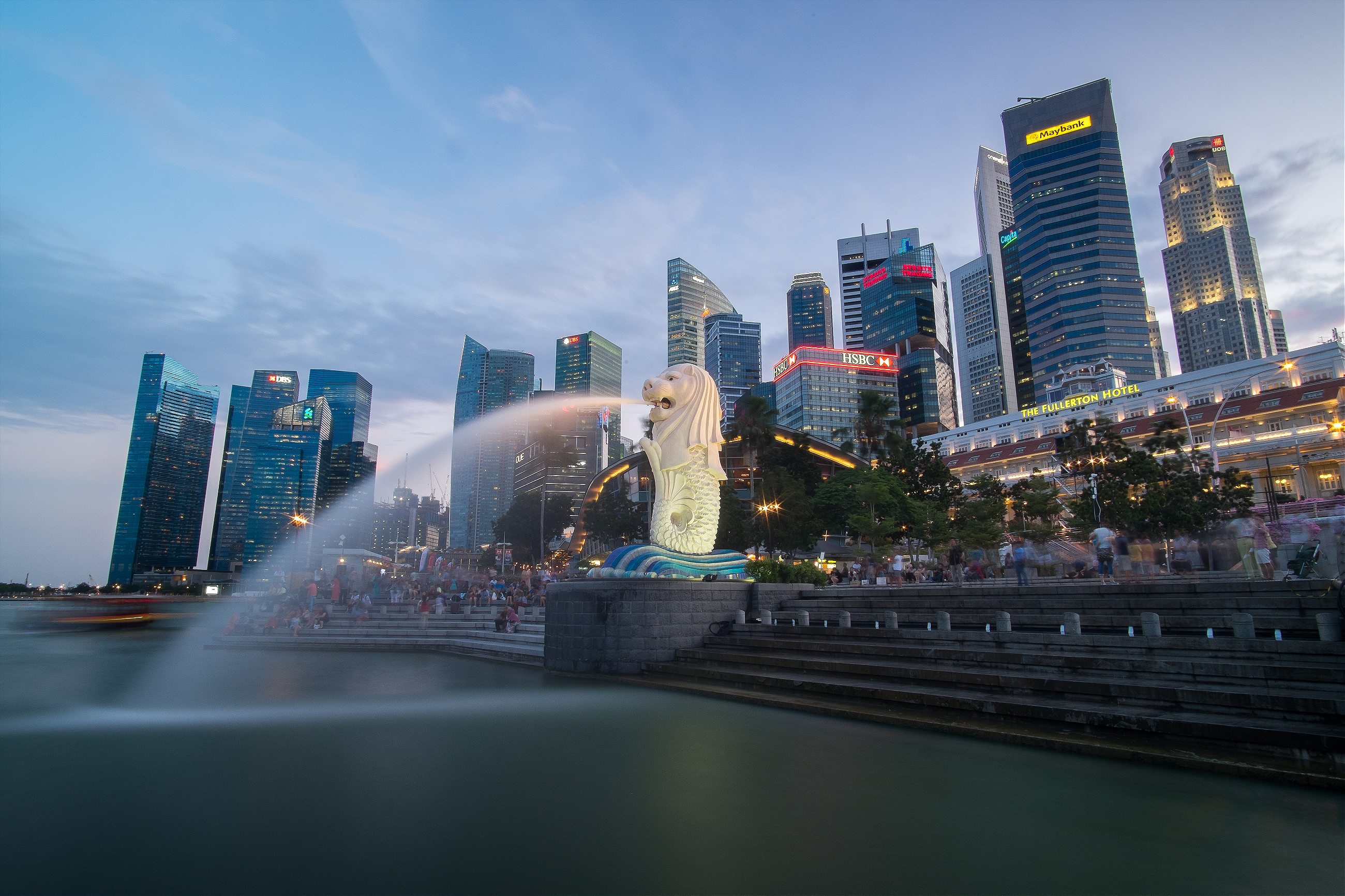

Drinkers pay the sin tax. There’s an alcohol ‘sin’ tax in Singapore, so booze comes at a price. For beer, the tax is S$60 per liter (US$42 per 33 oz), and the consumer picks up those costs. Expect to pay about S$10-S$17 (US$7-12) — more often more if you’re in a posh place — for a pint of beer at a pub. Beer is cheaper in coffee shops and hawker centers, but you’ll find that it’s often brought to you either with a bucket of ice. It’s common practice in Singapore–especially among older men–to drink beer with ice in it so that it stays cold longer in the tropical heat. And with prices the way they are, it probably doesn’t hurt that the ice makes your drink last longer too.

If you’re feeling posh, head to the birthplace of the Singapore Sling. A wave of new, upmarket cocktail bars have opened in Singapore, but visitors often make a beeline for the Long Bar at the Raffles Hotel to sip a signature Singapore Sling—it’s where the drink was allegedly invented by a Hainanese barkeep early last century. This cocktail pilgrimage will cost about S$30 (US$21). The price does, however, allow drinkers to indulge in a bit of throwback colonialism: peanuts are provided at every table, and you can simply throw the shells on the floor, much like the 19th century rubber plantation owners who patronized the Long Bar — leaving the staff to sweep up the mess at the end of the day.

Homosexuality? Still illegal. Singapore continues to retain Section 377A of the Penal Code, which criminalizes sex between men, even if its consensual, effectively criminalizing male homosexuality. It is also often seen as the state’s endorsement of discrimination against sexual minorities. But the gay rights movement has gained ground in Singapore. The pro-LGBT rally Pink Dot draws thousands, even tens of thousands, of supporters every year. Yet there is also vocal pushback from conservative Christian and Muslim groups, and concern over this backlash has made the government reluctant to repeal S377A. A constitutional challenge to the legislation failed in Singapore’s apex court last year.
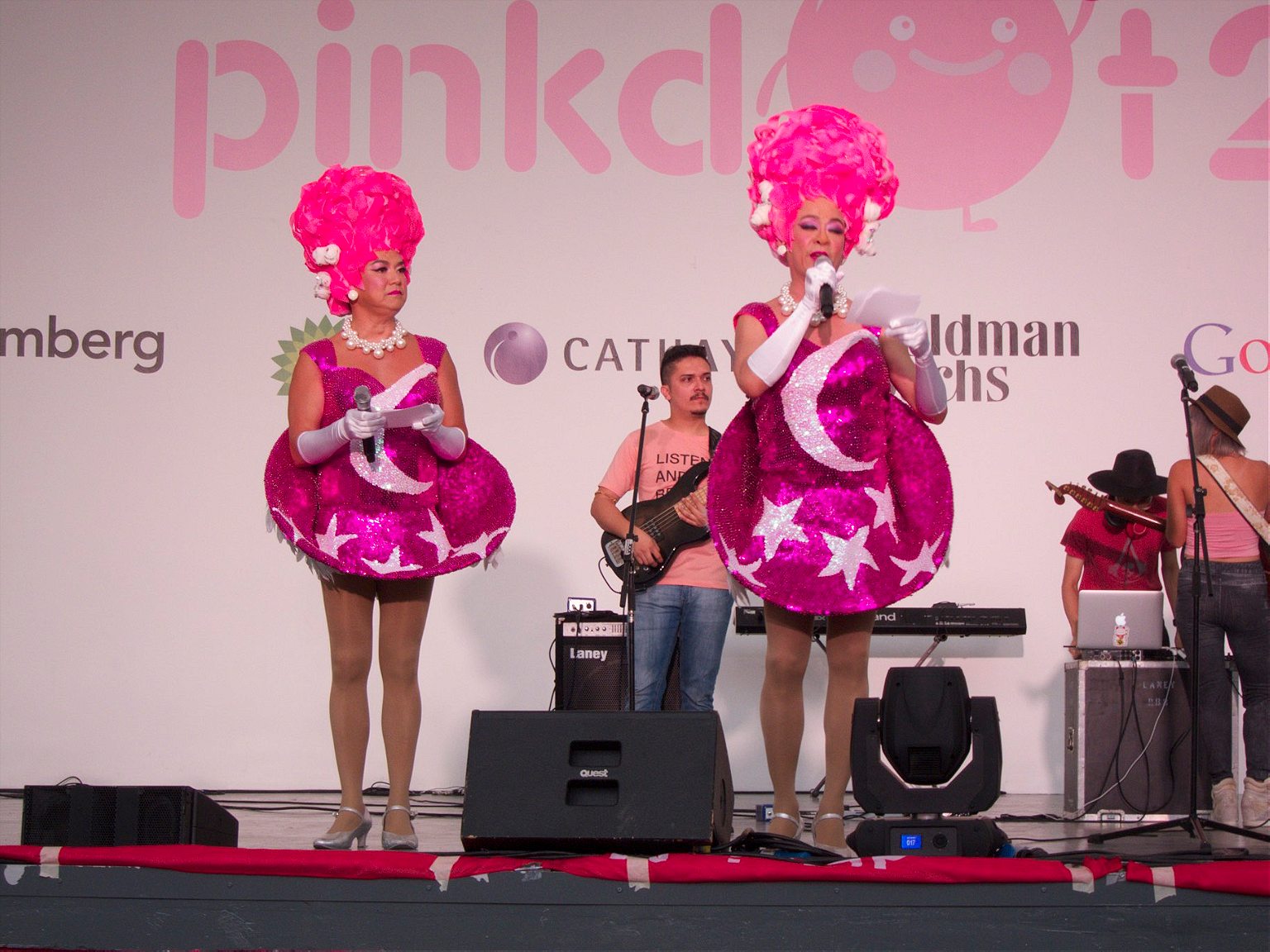

Yes, chewing gum really is banned, but it’s not as scary as you think.Anyone caught importing, selling or manufacturing chewing gum could be slapped with a fine or even some time behind bars. The ban was originally introduced to stop vandals from messing with the sensors on train doors, causing the trains to malfunction, as well as to generally stop chewing-gum litter in public areas that reportedly cost a fortune to remove. Following a free-trade agreement with the U.S., the ban has been partially lifted to allow the import and sale of gum for therapeutic use. The ban is often invoked as shorthand to illustrate Singapore’s authoritarian, controlled (and perhaps a little odd) society, but it has very little impact on most people’s day-to-day lives. Honestly, if you went to Malaysia and had some gum left in your bag, you’re hardly going to get tackled by the police for chewing it. Just dispose of it properly and no one will ever know.
Top image: Garden by the Bay. Photo by: LW Yang